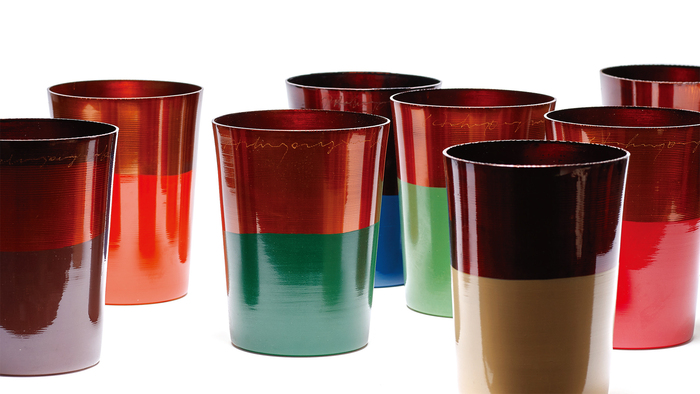Korean Craft 2020
The Shape of Senses, The Shape of Colors
The exhibition to experience the inner and outer scapes of Korean craft that connects to life through key words including shape, color, sound, and scent. Through the interaction between the wide spectrum of the five colors simultaneously embracing both achromatic and rich colors and the five senses that connect through ‘sound’ and ‘scent’, the diverse and profound world of Korean craft crosses between the borders of experience and self-reflection, visibility and invisibility, practicality and beauty.
Theme 1 | Shape of Sound_Seeing the Sound
The Buddhist bell that is considered the apotheosis of sound is installed at the center of the stage while contemporary Korean traditional crafts made of natural materials such as hanji, silk, wood, ceramics, hwamunseok, and mother-of-pearl are spread over the overlapping space like a work of painting.
Theme 2 | Shape of Color_Touching the Color
Various crafts of ceramics, lacquer paint, metal, woven accessories that create harmony of formative shapes and color objects are presented. Through the color variations of the five traditional Korean colors and arrangements, Korean emotions and aesthetics are waiting to be revealed.
Theme 3 | Shape of Scent_Listening to the Scent
Incense is burned within the inner space created by naturally dyed cloths, and meditation objets and hanji collage paintings are arranged. External and internal sides of Korean crafts that are closely linked to life are exposed and questions the essence of Korean aesthetics that lead to experience and introspection.
Artistic Director I Jaeyoung Kang
Space Design I Taehee Lim
Discover KCDF history at Fuorisalone
Designers
Yunhwan Park + Hyesu Kim, Jiman Choi, Jinwon Chung, Myoungwook Huh, Myungsun Kang, Jungok Kim, Minjung Kim, Bohyung Koh, Hyunjung Lee, Honggu Park, Seonkeung Park, Kwangsoon Rim
Visit website
Send email
The reason this exhibition is composed of the five colors and senses that centers around the auditory and olfactory senses is because invisible and synesthetic elements such as sound and scent is one of the key elements (much like the invisible air) that has sustained Korean crafts.



















































































